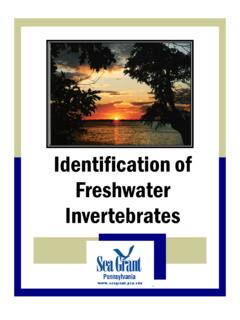Transcription of Husbandry Guidelines for the Plains Zebra (Equus burchelli)
1 Husbandry Guidelines for the Plains Zebra Equus quagga (formerly Equus burchelli). Mammalia: Equidae Author: Simon Husher Date of completion:12/2010. Western Sydney Institute of TAFE. Ricmond. Course Name and Number: Captive Animals Certificate III RUV 30204/1068. Lecturer: Graeme Phipps and Brad Walker 1. 1. Introduction ..1. IUCN Category .. 2. ASMP Category .2. Species Coordinator ..2. Studbook holder .2. 2. Taxonomy ..3. Nomenclature ..3. Subspecies ..3. Important Synonyms ..3. Common Names ..3. Indigenous Names .. 3. 3. Natural History .. 4. Morphometrics 4.
2 Distribution and habitat .. 7. Distribution .. 7. Habitat .11. Conservation Status 12. Diet in the wild .. 12. Longevity 12. Wild ..12. Captivity ..12. 4. Housing Requirements ..13. Exhibit Design . 13. Holding Area Design ..17. Spatial Requirements ..17. Position of enclosures ..18. Weather Protection ..18. Temperature Requirements ..18. Substrate ..19. 5. General Husbandry ..20. Hygiene and Cleaning ..20. Record Keeping .. 20. Methods of Identification .20. Visual identification .20. Passive Integrated Transponder tag .21. Ear tags . 21. Routine Data Collection.
3 22. 6. Feeding Requirements ..23. Captive Diet .23. Supplements .27. Presentation of Food 27. 7. Handling and Transport .. 31. Timing of capture and Handling ..31. Catching bags ..31. Capture Techniques . 31. 2. Chemical sedation .31. Float Training 31. Rounding up into float or Container .32. Weighing and Examination .35. Release 36. Transport Requirements ..36. Box Design 37. Furnishings 38. Water and Food . 39. Animals per box .39. Timing of transport 39. Release from the box .39. Health Requirements ..40. Daily Health Checks .40. Detailed Physical Examination.
4 40. Sedation and Anaesthesia ..40. Physical Examination procedure ..41. Routine Treatments ..43. Known Health Problems ..43. Colic ..44. Club foot 46. Endoparasitic Worms .48. Roundworm (Parascaris equorum) 48. Blood Worm (Strongylus vulgaris) 49. Equine Intestinal Threadworm (Strongyloides westeri) .50. Cyathostomes ..50. Tetnus 51. Neurologic EHV-1 52. Quarantine Requirements .53. 9. Behaviour ..54. Activity .54. Social Behaviour ..54. Reproductive Behaviour ..57. Bathing .58. Behavioural Problems ..58. Signs of Stress ..58. Behavioural Enrichment ..59. Introductions and Removals.
5 59. Intraspecific Compatibility ..59. Interspecific Compatibility .59. Suitability to Captivity 59. 10 Breeding ..60. Mating System 60. Ease of Breeding .60. Breeding Condition .60. Techniques Used to Control Breeding 60. 3. Occurrence of Hybrids 61. Timing of Breeding .61. Age at First Breeding and Last Breeding 61. Ability to Breed Every Year ..62. Ability to Breed More than Once Per Year 62. Nesting Requirements .. 62. Breeding Diet .. 62. Oestrous Cycle and Gestation Period .. 62. Litter Size 62. Age at Weaning .. 62. Age of Removal from Parents ..63. Growth and Development 63.
6 11. Artificial Rearing 65. Housing ..65. Temperature Requirements 66. Diet 66. Specific Requirements ..68. Identification methods ..68. Hygiene and Special Precautions ..69. Behavioural Considerations ..69. Use of foster species ..70. Weaning .70. 12. Acknowledgements 71. 13. References ..72. Books and Scientific Papers ..72. Websites and websites for accessing Scientific Papers .72. Other ..73. 14. Appendix 74. 4. * CAUTION: Plains Zebra are capable of critically or fatally injuring a person by biting with their razor sharp teeth or kicking with their hooves.
7 They are instinctually a wild animal and know how to fight if they are cornered, stressed or want to assort their authority. So always maintain extreme caution when working with Plains Zebra . 1: Introduction This is a guide to the captive management of the Plains Zebra . The manual includes information on the Zebra 's natural habitat, wild status, captive requirements, general health and breeding. The Plains Zebra has been split into several sub-species over the years using genetic taxonomies and traditional taxonomies and some of these are having not been fully resolved.
8 I am following and Catherine 's traditional taxonomy and world recognized findings in their study New investigations on the taxonomy of the Zebra 's genus Equus, subgenus Hippotigris' to differentiate the sub species of the Plains Zebra in this manual. These are the following sub-species Equus quagga quagga , Equus quagga boehmi, Equus quagga borensis, Equus quagga crawshayi, Equus quagga chapmani, Equus quagga burchelli, the most conspicuous morphological differences that divide these are body size and width, cranial size, presence of mane and also the intensity and coverage of dark stripes on the adult pelage.
9 Plains Zebra are native to the following countries Botswana; Congo, The Democratic Republic of the; Ethiopia;. Kenya; Malawi; Mozambique; Namibia; Rwanda; Somalia; South Africa; Sudan;. Swaziland; Tanzania, United Republic of; Uganda; Zambia; Zimbabwe and are possibly extinct in Angola. They have unfortunately become regionally extinct in the following countries Burundi; Lesotho. IUCN have categorized the conservation status of the Plains Zebra as of Least Concern having numbers of around 660 000 in 2002 and a population trend of Stable'. These numbers and status seem comforting, but until we have sure Plains Zebra taxonomies and population numbers of the sub species we just may lose an important sub species like the Equus quagga quagga .
10 At present current information on population sizes are limited and stating from The IUCN Red List website is that information gathered from an Aerial survey data in Tanzania indicate there may have been a population decline of approximately 20% from the late 1990s to the mid-2000's (Hack et al. 2002;. TAWIRI/TWCM pers comm. 2008). This is concerning seeing that 70% of the global population is found in only 2 countries Tanzania and Kenya showing that the preservation of this species relies entirely on their fate in this region of East Africa. The threats to Plains Zebra are not listed as major and have not resulted in a range-wide population decline, but localized declines have resulted in some areas, due to overhunting and habitat loss.
